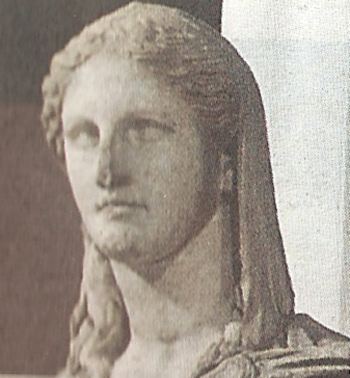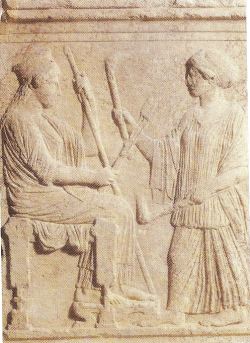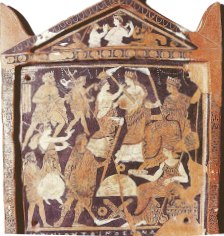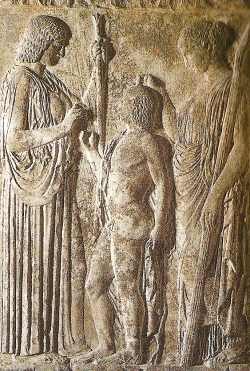Demeter, the ancient greek earth goddess
It is widely believed that her name is derived from the word da or di, which meant earth, and mitir, which means mother-hence, Dimitra. Contrary to those who consider Demeter to be a Greek goddess, identifying her as the evolution of the Great Mother Goddess, Gaia, the historian Herodotus claims that she is the Egyptian goddess Isis, who was introduced in Greece by the Pelasgians and then the Arcadians. The most important sanctuaries dedicated to the goddess of earth were found in Thessaly, Arcadia, Attica and Boetia.
The Myth of Persephone
The most widely known myth linked with the goddess of earth, is the myth involving the abduction of her beloved kore (daughter) Persephone from Hades, the ruler of the Underworld. In fact, this myth is one of the most widely known of Greek Mythology, as it represented the ancient greek version of the common theme running across the conceptual foundation of many religions, relating to the eternal cycle of life-death-resurrection. Click here to learn more about the myth of Persephone. Eleusinian Mysteries
Closely linked with the worship of the earth goddess, the Eleusinian Mysteries were the most respected of the sacred mysteries of the ancient Greeks and revealed to the initiated the great secret of life and death, as well as what happens to the soul after death. These mysteries were probably part of the worship rituals of the Pelasgians and were conducted by the royal families of Eleusis. These rituals gained fame in the seventh century B.C., when the kingdom of Eleusis was occupied by Athens. There were two Eleusinian mysteries: the great and the lesser mysteries. The lesser mysteries were basically preparatory rituals (cleansing and fasting of the initiated) and took place during the month of February. The great mysteries took place during the month of September and lasted for nine days, the same length of time that the goddess wandered the earth in search of her daughter Persephone, according to the relevant myth. Before the onset of the rituals, Athenians dispatched spondophorous (heralds) throughout Greece, with the mission to invite observers and declare a two-month holy truce, in an effort to cease all hostilities among cities, that were probably taking place at the time. Unfortunately, because of the secrecy shrouding the whole event, not much is documented in ancient writings of the time, about what went on during the ceremonies. From the little information available, it is known that a central theme of the rituals was the dramatic recreation of the myth of Demeter and Persephone. In summary, the Eleusinian mysteries offered the initiated the prospect of a better earthly life, but also the hope and expectation of divine eternity after death, as the mysteries preached the immortality of the soul. The goddess’s other traits
Because of the similarity between the female womb and the earth (both nurture a seed until it is ready to emerge into its earthly life), Demeter, apart from her function as goddess of earth,was also the goddess of marriage who blessed children. At weddings, prayers were offered to the goddess for eugony and fertility. The goddess thus also became the protectress of women and was known as Thesmophorus, or she who protects laws and institutions, women’s lives and marriage. Every year, the Athenian women celebrated the goddess of earth and her daughter Persephone at the Thesmophoria, a three-day festival dedicated to the fertility of both nature and humankind. The goddess was also the protectress of society, since people formed settlements around agriculture and created common laws and institutions. In ancient Greece, the dead, after they were buried in earth, they were known as Demetrians, to signify the fact that their body’s cycle of life had ended and had returned to earth. Their souls, however, descended to Hades where they were greeted by Persephone. Thus, it is manifested in the most symbolical way that the divine power who gives earthly life (in this context Demeter) and the other who gives immortal life (Persephone) are closely bound in a cycle of life, death and resurrection through the immortalization of the souls.
Return from Demeter to Greek Pantheon
|
|||||
Resource MaterialClassroom MaterialMovies,DVDs, Games and BooksAbout the SiteYour Stories |
|||||
|
|
|||||










